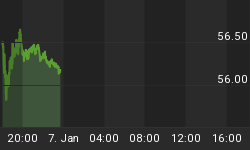After borrowing -- and largely wasting -- $15 trillion during the Great Recession, China now looks like a typical decadent developed-world country, complete with slow growth, anemic consumer spending and unstable financial markets.
But it's not France, Canada or the US, where recessions happen and voters peacefully replace one major party with the other. China, within living memory, has seen civil unrest beget open rebellion beget multi-decade civil war.
Just as Germany is never going back to hyperinflation, China will not tolerate mass protests. Which means it somehow has to find jobs for the tens of millions of citizens who aspire to middle class life. This need for growth at any price explains the borrowing/infrastructure binge of the past five years. And soon it will explain a massive devaluation/QE program. From Monday's Wall Street Journal:
China's Workers Stumble as Factories Stall
XIGUOZHUANG, China--For decades, an army of migrant workers drove China's boom times, flocking to its cities to sew T-shirts, assemble iPhones, or build apartment blocks and Olympic stadiums.The arrangement helped millions of poor, rural Chinese join a new consumer class, though many also paid a heavy price.
Now, many migrant workers struggle to find their footing in a downshifting economy. As factories run out of money and construction projects turn idle across China, there has been a rise in the last thing Beijing wants to see: unrest.
In Xiguozhuang, a village among cornfields some 155 miles south of Beijing, it had been rare to see working-age men for much of the year. This year, however, many of the men are at home, sidelined by a fading property boom.
"Times are tough now," said Wang Hongxing, a 39-year-old father of three who has worked at building sites across China's northeast since his teens, but who has spent the past two months tending his farmland plot. "There are too many workers and wages are dropping."
But for other migrants, especially those of a younger generation who took jobs in factories along China's coast, a return to farming isn't an option. Nor do they necessarily want to join the service sector China sees as a cornerstone in its shift to a new economic model.
Wang Chao dropped out of school when he was 15 and left his home in Anhui province. After a series of jobs up and down China's east coast, he felt he had struck gold with a job in a textile factory near his hometown.
The factory closed in July. Mr. Wang, now 19, and other workers gathered recently outside the factory premises to demand back wages. He says he is owed two months' pay, or about 2,000 yuan, or $320. The owner of the factory, which produces cheap trousers, told workers he is in deep debt and can't afford to pay them. He couldn't be reached to comment.
Mr. Wang hopes he can find another factory job. In Shanghai, he worked in a restaurant but doesn't want to do that again. "Factory work is so much more comfortable in comparison, and better paid," he said.
As a result of a rural-to-urban flow that many scholars say is likely the largest in history, roughly 55% of China's 1.37 billion people now live in cities, compared with just under 18% in 1978.
The migrant workforce now numbers some 274 million but the pace of its expansion has slowed, and many economists believe China now faces a shortage of unskilled labor in urban areas. A mismatch of workers' skills and aspirations with actual labor demand has exacerbated the problem.
...In August, after the factory a which made Power Wheels cars and other toys for Mattel Inc., shut its doors, hundreds of workers protested to demand unpaid wages.
Such unrest has become more common. China Labour Bulletin, a Hong Kong-based watchdog, has tracked more than 1,600 labor protests and strikes in China since January, already exceeding last year's overall tally of 1,379.
The malaise has even affected workers at major state-owned enterprises. In May, thousands of workers staged protests over proposed layoffs at China National Erzhong Group Co., a debt-riddled machinery maker in Sichuan. Workers shared images on social media of banners criticizing company officials. One read: "360 yuan! How can we live on that!"
In response to such disputes, local authorities have at times adopted harsh tactics, including sending police officers to break up strikes and detain protesters. But in some cases authorities have also sought to appease workers.
The recent unrest is still far from the massive protests that swept over China in the late 1990s and early 2000s as state-owned enterprises laid off tens of millions of workers and local governments expropriated farmland around emerging cities for development.
But the rise in frequency of strikes and protests has caused concern in Beijing, which in March urged bureaucrats across the country to prioritize "harmonious labor relations."
Take a surplus of young men (the result of China's one-child policy which put a premium on male children), combine it with a shortage of good jobs, and the obvious result is instability.
The equally-obvious solution? Easier money designed to get people borrowing and spending. So now it's just a question of which central bank is first to address its country's crisis (slow growth and a massive influx of refugees for the eurozone, slow growth and a demographic implosion for Japan, slow growth and global chaos for the US, and now slow growth leading to civil unrest for China) with a massive devaluation. China, given its history, might be the odds-on favorite.















